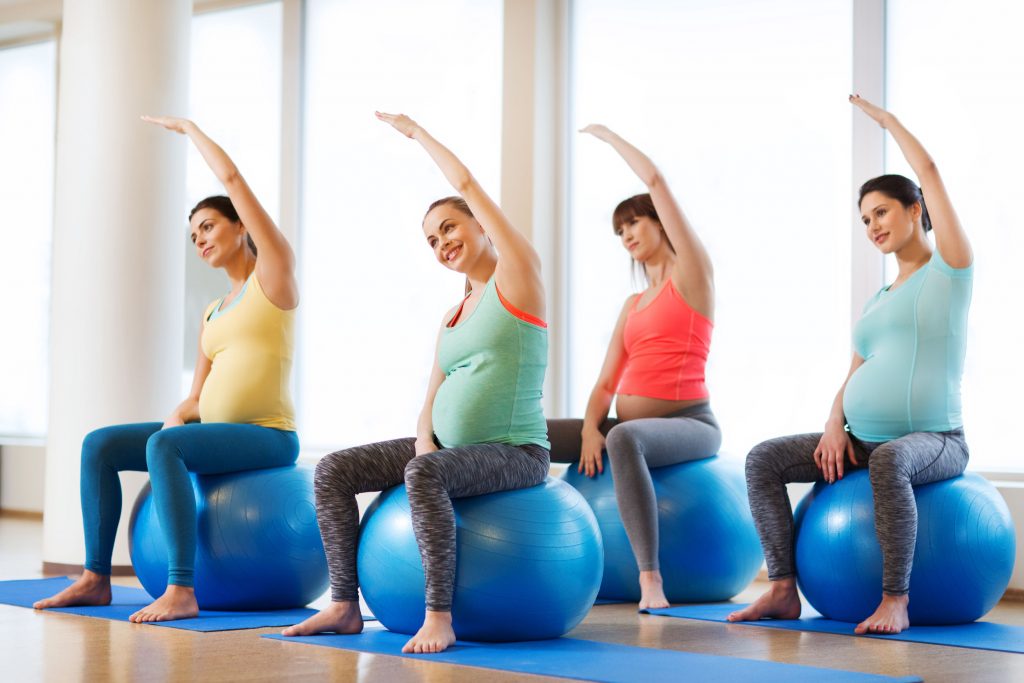The MOH guide to staying active during pregnancy
Keeping active with regular exercise will help you feel your best and stay healthy throughout your pregnancy. Maintaining a regular exercise routine can limit some of the common aches, pains and discomforts of pregnancy. Back and pelvic pain, headaches, constipation and fatigue can all respond positively to an appropriate exercise program.
What’s safe?
The first thing to know is when it might not be safe to exercise…
The risk associated with exercising when pregnant is really quite low overall, and the benefits outweigh the risks for most women. Some circumstances however might mean we should be more cautious. So, if you have any of the following, exercise should be cleared with your GP and may need to be monitored and modified by a qualified Allied health practitioner such as an Exercise physiologist, an osteopath or a physiotherapist:
- Pre-existing heart or lung disease
- Incompetent cervix (early membrane rupture)
- Hypertension or pre-eclampsia
- Uncontrolled diabetes
- Placenta previa
- Persistent bleeding into the second or third trimester


There are a heap of benefits to exercising while you’re pregnant
Staying active during pregnancy:
- Improves strength and posture
- Helps your body adapt better to physical change
- Reduces your risk of gestational obesity and diabetes
- Helps build the fitness and stamina needed for labour and early motherhood
- Helps limit the risk of blood clots, hypertension and pre-eclampsia
- Increases the supply of oxygen to you and your child
- Improves quality of sleep
- Promotes post-partum recovery
- Helps you maintain your mental health by promoting better mood and body image
What not to do
If you were physically active before your pregnancy, you should be able to continue your routine with some sensible modifications as you progress through your pregnancy. Don’t push too hard to maintain the intensity or duration of your routine before becoming pregnant – pace yourself and do what’s reasonably comfortable.
Some types of exercise are probably best avoided:
- Contact sports are top of the ‘no go’ list
- Ballistic or plyometric exercise is probably worth being very cautious with also
- Hot yoga or hot anything really is a bad idea
- Sit-ups and crunches are not helpful
- Horseback riding
- Anything lying on your back for more than a minute or two
- Anything at high altitudes
Knowing when to stop
The other thing that is probably wise to know is what to be on the lookout for, what might mean it’s wise to stop or to consult with your GP before returning to exercise.
What to look out for:
- Decreased foetal movement
- Leaking amniotic fluid
- Dizziness and light-headedness
- Nausea and vomiting
- Vaginal bleeding
- Breathlessness before exertion
- Chest pain
- Calf pain or swelling
- Any signs of preterm labour
Starting out?
If you haven’t exercised much before but you’re in generally good health, it is still safe to start an exercise program. If you have any prior health issues, it’s certainly worth getting the go ahead from your doctor before setting out.
Remember that exercise doesn’t have to be strenuous to be beneficial! Moderate intensity is the way to go. This means you should be able to comfortably keep up a conversation and not over-heat.
Some sensible choices for exercise in pregnancy include:
- Walking – Walking is a great way to start exercising and is considered very safe for pregnant women; 30 minutes a day of moderate intensity walking is all it takes. Hiking is a great way to get out and about and build some endurance in longer walks; having a friend or partner along can make it even more enjoyable.
- Swimming – Water aerobics and swimming are fun ways to keep fit and active during your pregnancy. Exercising in water means less stress on your joints and muscles so you can build stamina in a gentle, low-impact way.
- Cycling – Cycling at a comfortable pace in the fresh air stimulates your circulation, improves your blood flow and reduces your risk of blood clots and varicose veins. Stay off road and make sure you have a comfortable saddle.
- Running – Running at a comfortable, easy pace is a great way to stay in shape while pregnant. Keep the intensity low and work within your comfort zone. Avoid over-heating, stay well hydrated and modify your pace and distance as your belly grows.
- Yoga and Pilates – Yoga and pilates are both low-impact, low-risk exercises during pregnancy but it’s always wise to work with someone who can modify routines and postures to suit the physical and metabolic restraints of pregnancy.
